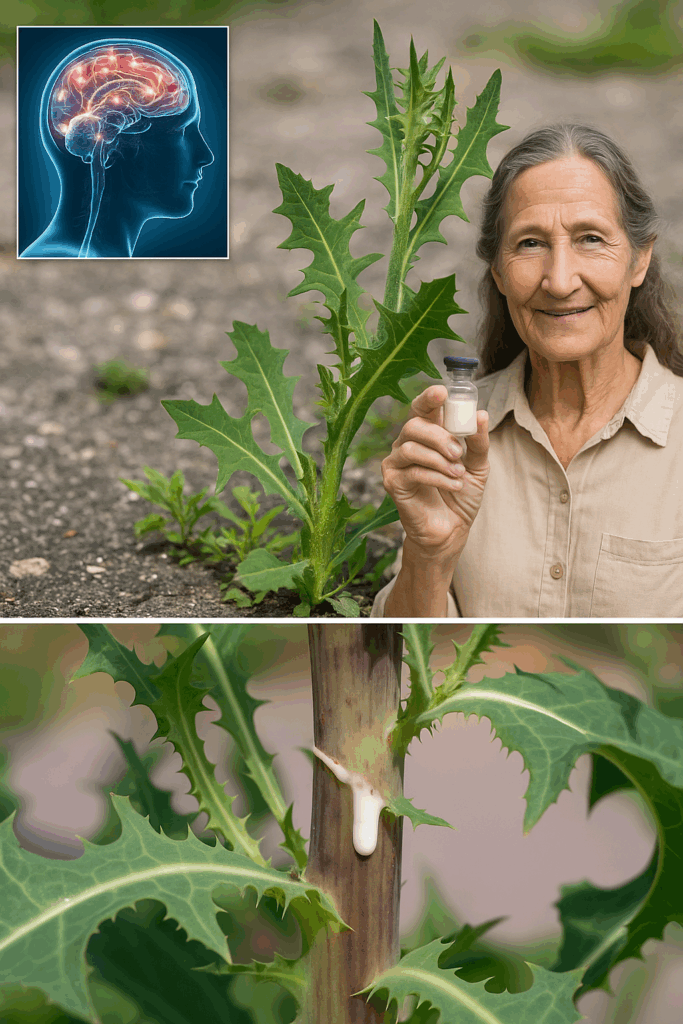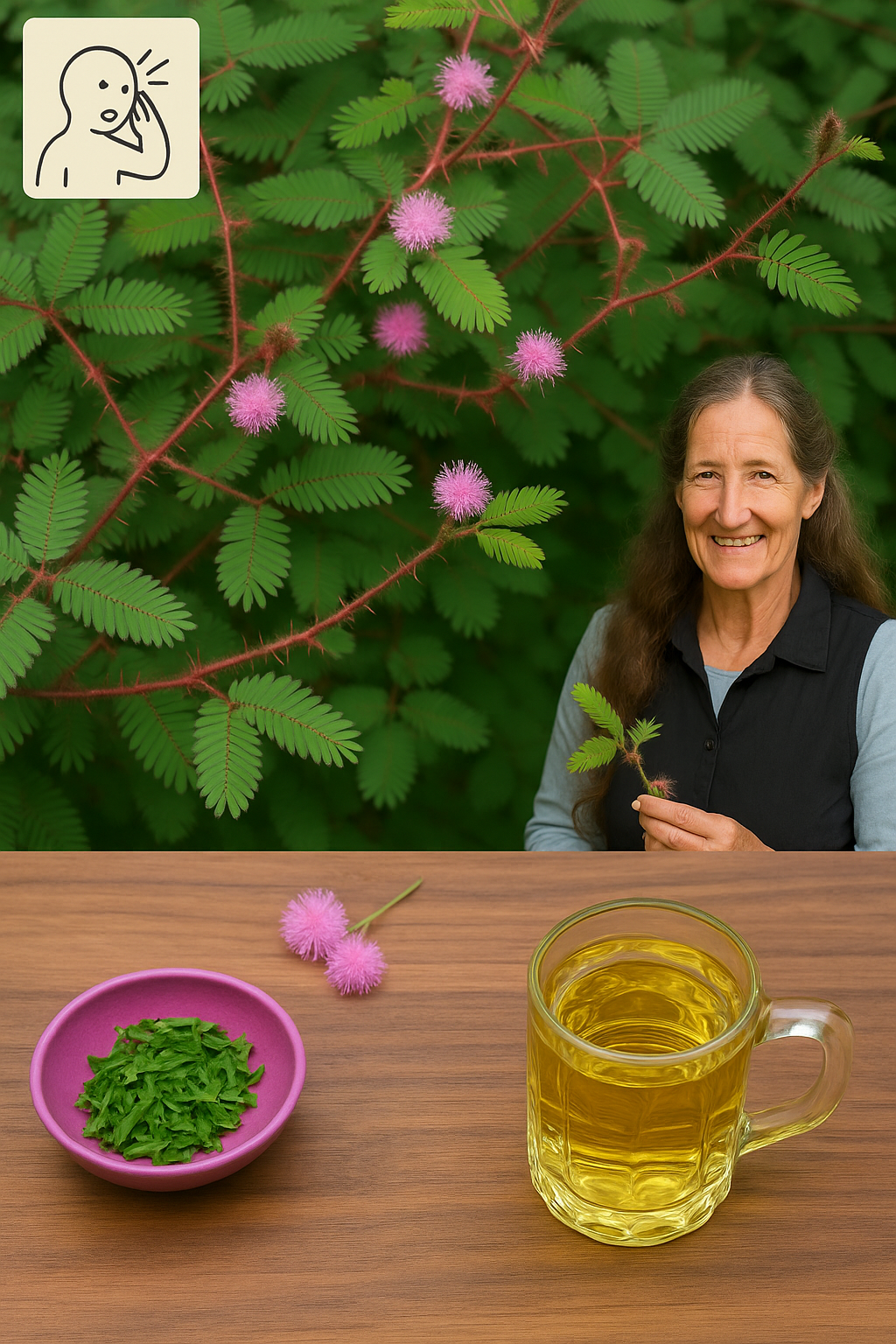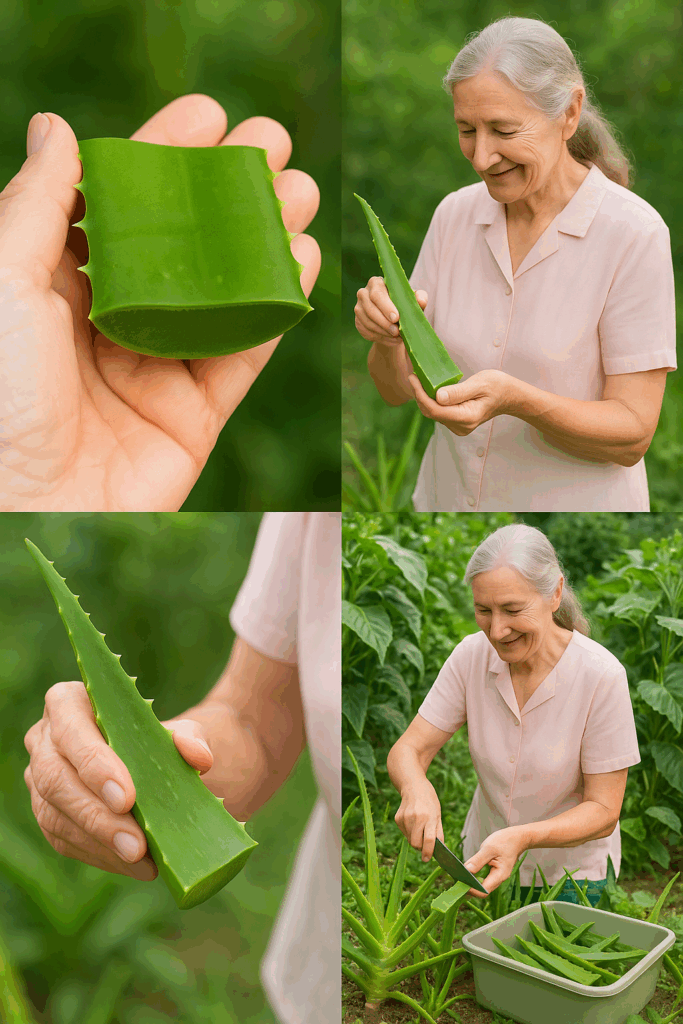Wild lettuce (Lactuca virosa), often nicknamed “opium lettuce”, is a tall, spiky plant that’s been quietly used in traditional herbal medicine for centuries. Though it contains no opiates, the milky white sap inside its stems and leaves—known as lactucarium—acts as a natural pain reliever and sedative. Its reputation as a calming agent and gentle analgesic has grown in recent years, especially among people seeking natural alternatives to pharmaceutical drugs.
In this article, we’ll reveal how to properly collect wild lettuce sap, the most effective ways to use it, and the benefits and cautions to keep in mind.

🌿 What Is Wild Lettuce Sap and Why Does It Matter?
The cloudy, latex-like sap found in Lactuca virosa contains compounds like lactucin and lactucopicrin, which may provide pain relief, relaxation, and mild sedative effects. While it doesn’t cause intoxication, it’s historically been prized as a soothing remedy for sleeplessness, anxiety, and chronic discomfort.
Many herbalists refer to it as a “natural morphine substitute”—but without the addictive potential or respiratory depression linked to opioids.
🔍 How to Identify and Harvest Wild Lettuce Sap
Where to Find It:
Wild lettuce thrives in disturbed soils, roadsides, meadows, and open fields. Look for it in late summer when sap production peaks.
What It Looks Like:
• Grows 3–6 feet tall
• Blue-green leaves with prickly undersides
• Small yellow flowers at the top
• When cut, the stem releases white sap
Harvesting Instructions:
- Use a clean, sharp knife to cut the main stem near the base.
- As the sap oozes, collect it with a spoon or scrape it onto a glass plate.
- Continue making small cuts further up the stem and branches to collect more sap.
- Let the sap air-dry into a sticky brown resin.
- Store in an airtight container, away from moisture and heat.
Tip: Harvest during dry, sunny weather when the plant is fully mature.
💡 How to Use Wild Lettuce Sap: Four Practical Methods
1. Tincture (Best for Beginners)
• Combine dried sap with 40% alcohol (vodka or brandy).
• Use a ratio of 1:5 (1 part sap to 5 parts alcohol).
• Let steep for 2–4 weeks in a cool, dark place.
• Shake daily, then strain and bottle.
• Start with 1–2 drops in water, increasing gradually if needed.
Best for: Sleep support, stress relief, and light pain.
2. Tea (Using the Leaves, Not Sap)
• Boil 1–2 tsp of dried wild lettuce leaves.
• Steep for 10–15 minutes.
• Strain and drink before bed.
Best for: General relaxation and digestion support.
3. Direct Use of Dried Sap (Advanced Users Only)
• Use a tiny piece the size of a grain of rice.
• Dissolve in warm water or herbal tea.
• Do not exceed this amount unless experienced.
Best for: More intense relief of pain or insomnia.
4. Topical Application (Muscle Aches, Joint Pain)
• Mix dried sap with a carrier oil like coconut or olive oil.
• Rub on the affected area.
• Do not apply to open wounds or broken skin.
Best for: Localized discomfort or muscle tension.
🌿 Potential Benefits of Wild Lettuce Sap
✅ Natural pain relief for minor aches, headaches, and sore muscles
✅ Eases stress, nervous tension, and restlessness
✅ Promotes deeper, more restful sleep
✅ May help reduce coughing or throat irritation
✅ Gentle mood enhancer and relaxation aid

⚠️ Important Precautions Before You Try It
• Start small: Wild lettuce sap is potent in concentrated form. A little goes a long way.
• Not suitable for children, pregnant women, or people with liver conditions.
• Allergic reactions are possible, especially for those sensitive to the Asteraceae family (daisies, dandelions).
• Overuse can cause nausea, dizziness, or grogginess. Always begin with the minimum dosage.
• Avoid using heavy machinery or driving after consumption.
🧠 Final Thoughts
Wild lettuce sap is one of nature’s lesser-known but impressively powerful herbal tools. If used with care, it can be a gentle aid for those dealing with stress, insomnia, chronic pain, or simply in need of calm. Unlike synthetic drugs, wild lettuce offers a natural, holistic approach—but its potency still demands respect and responsibility.
If you’re looking to explore natural sedatives or pain relief, this plant may be worth a closer look. Just make sure to consult with a healthcare provider before starting, especially if you’re on medications or have underlying health conditions.
Ready to explore more hidden herbal gems? Keep learning and stay safe with your natural wellness journey.


